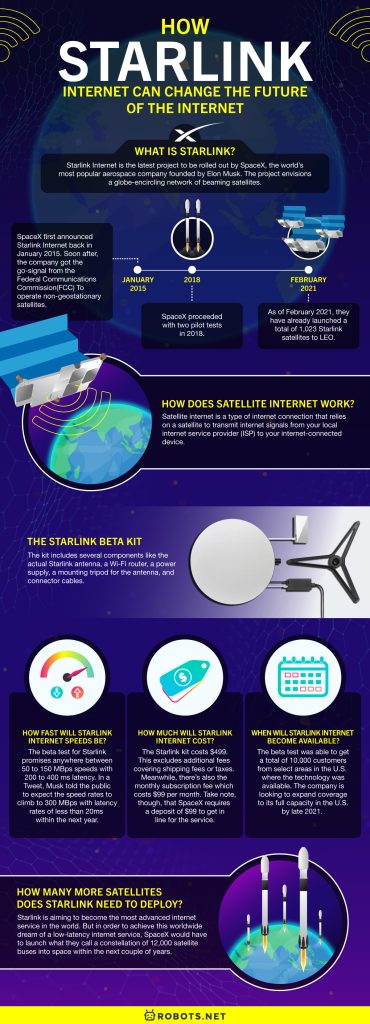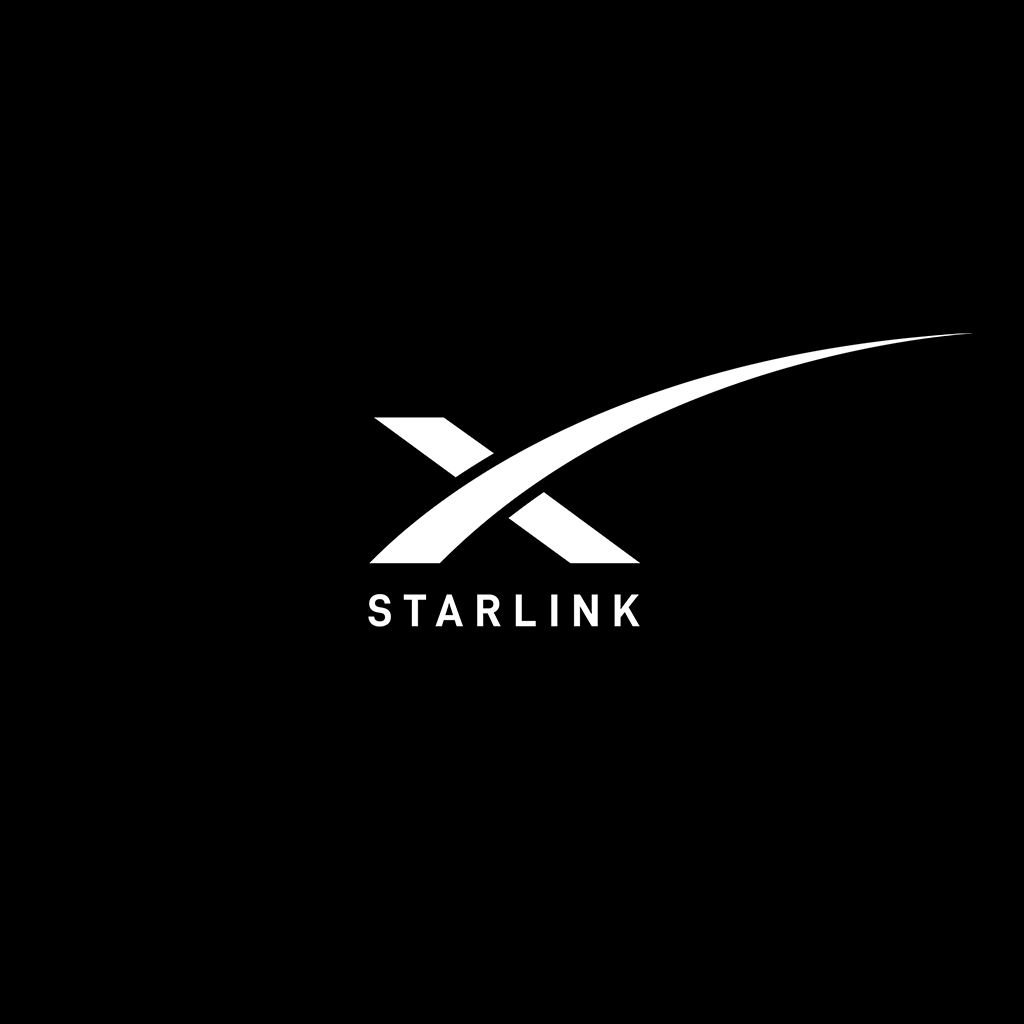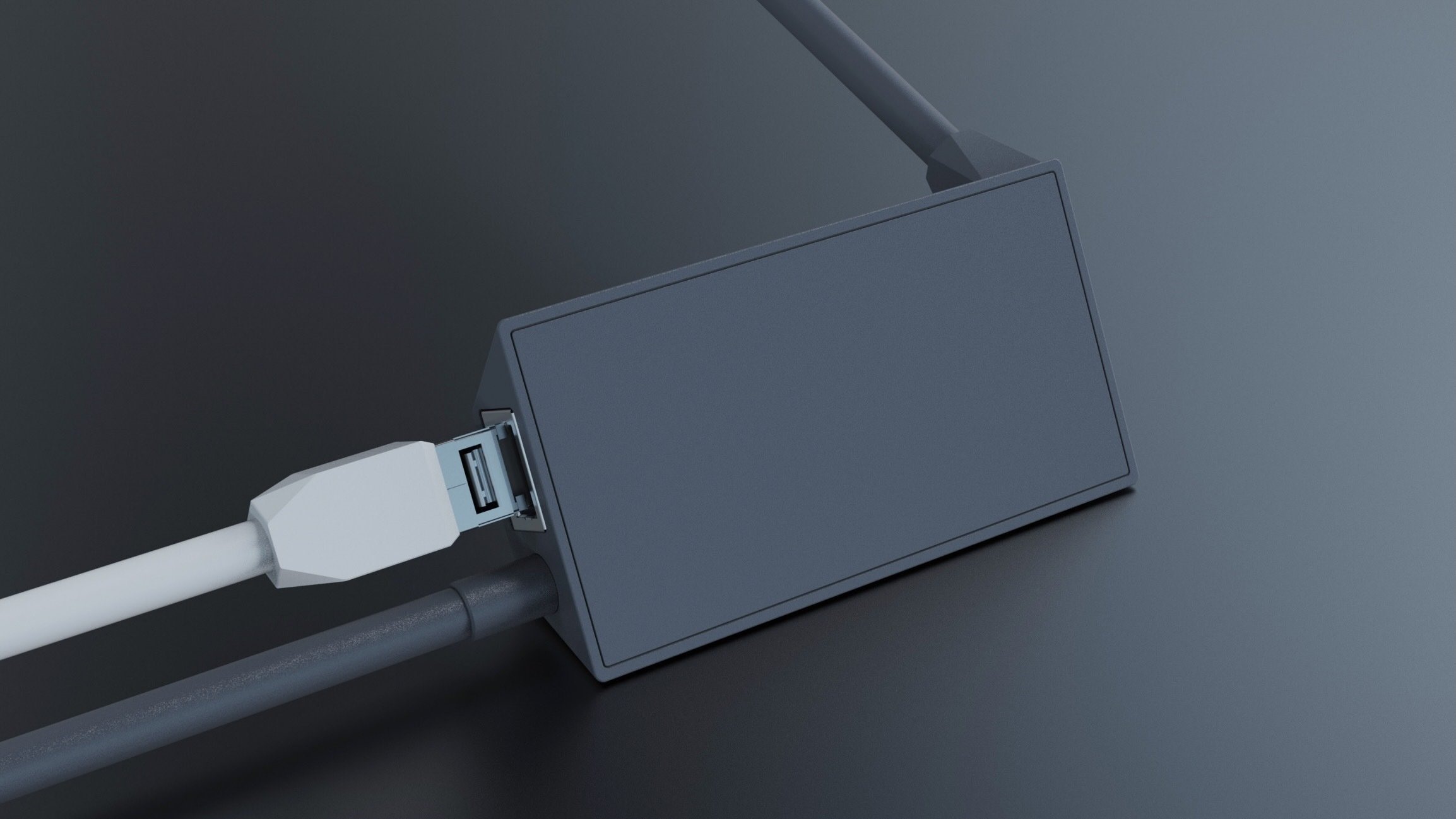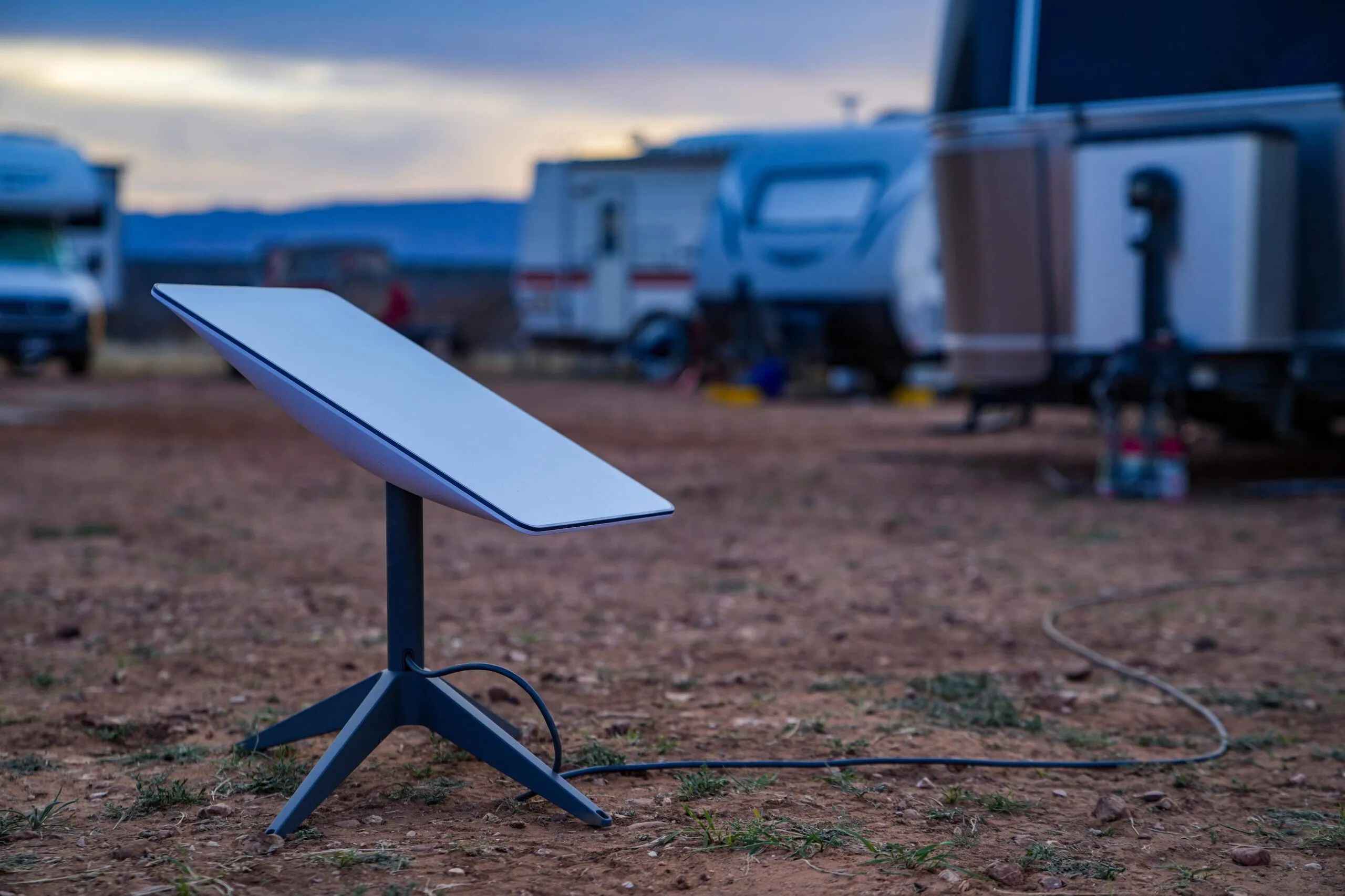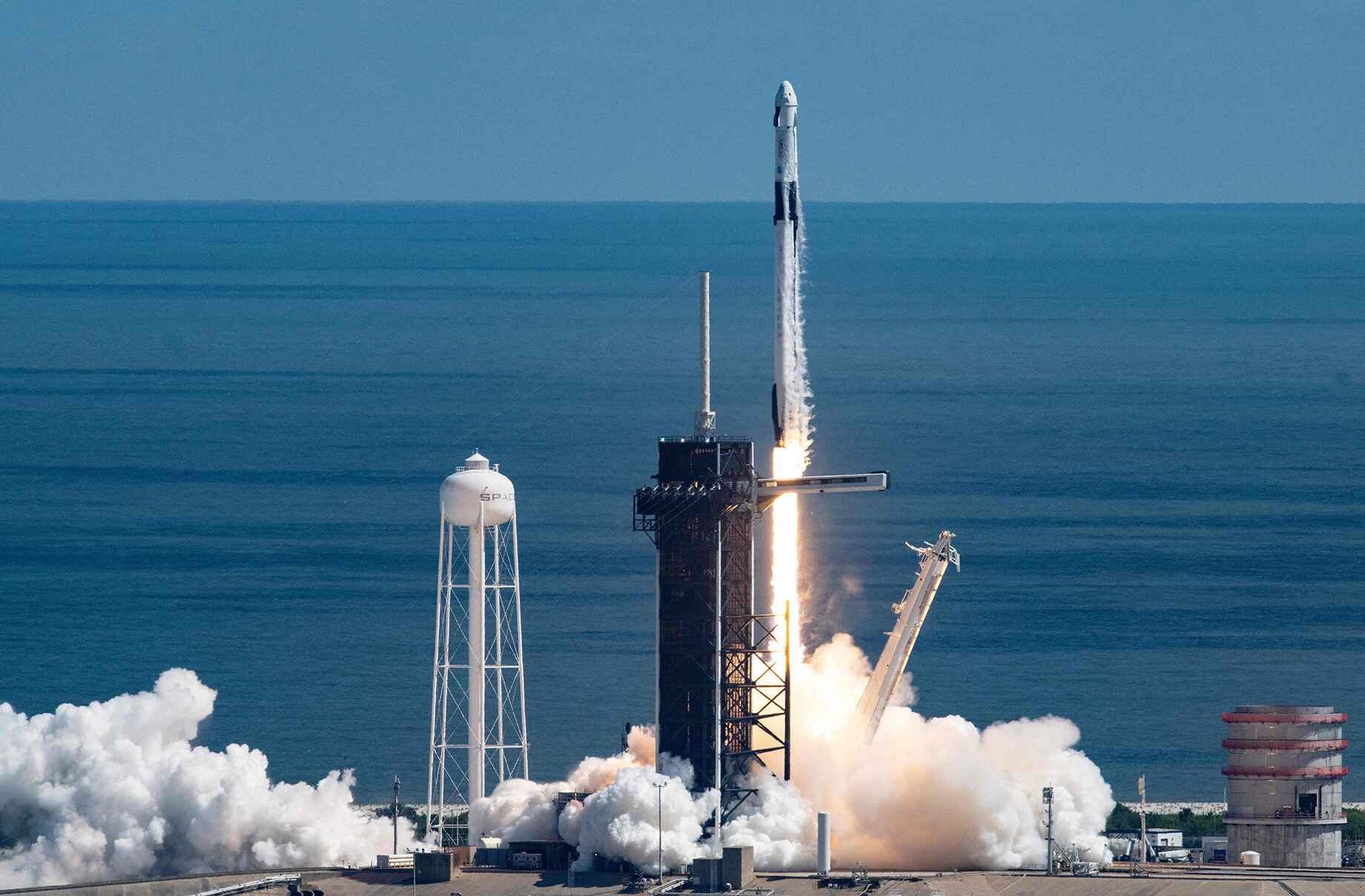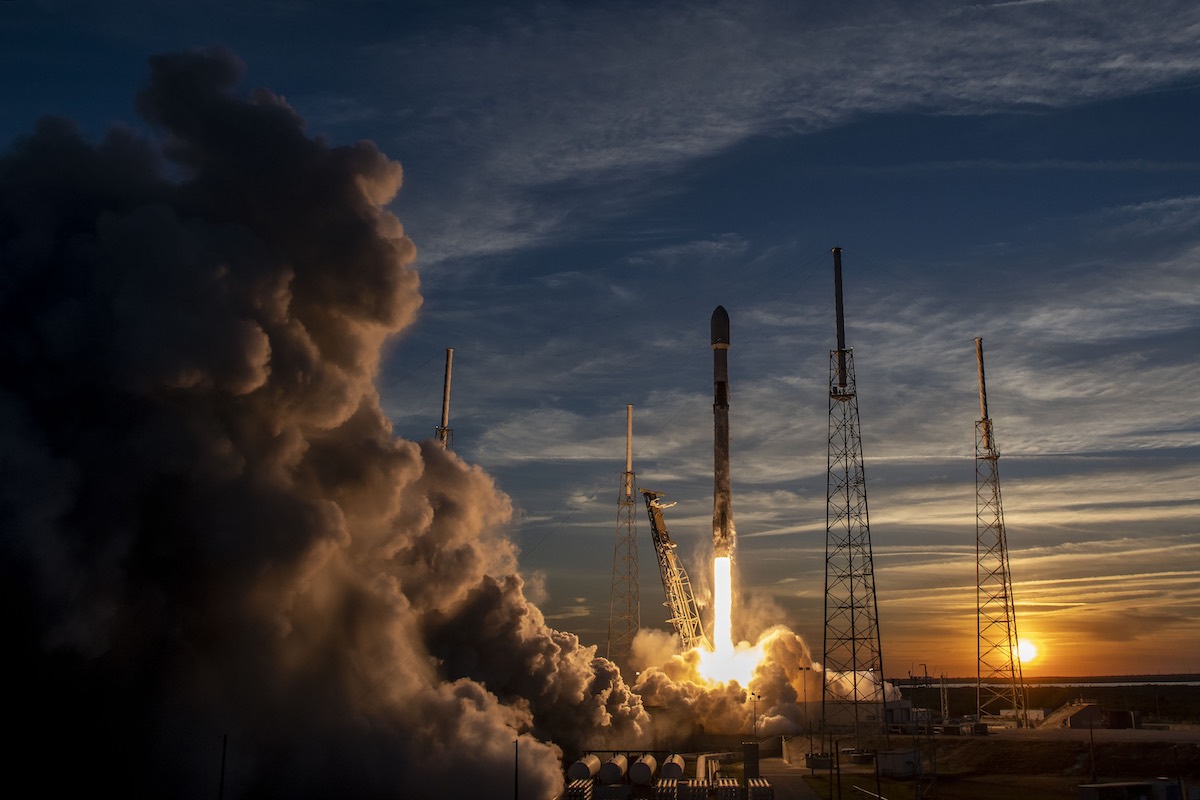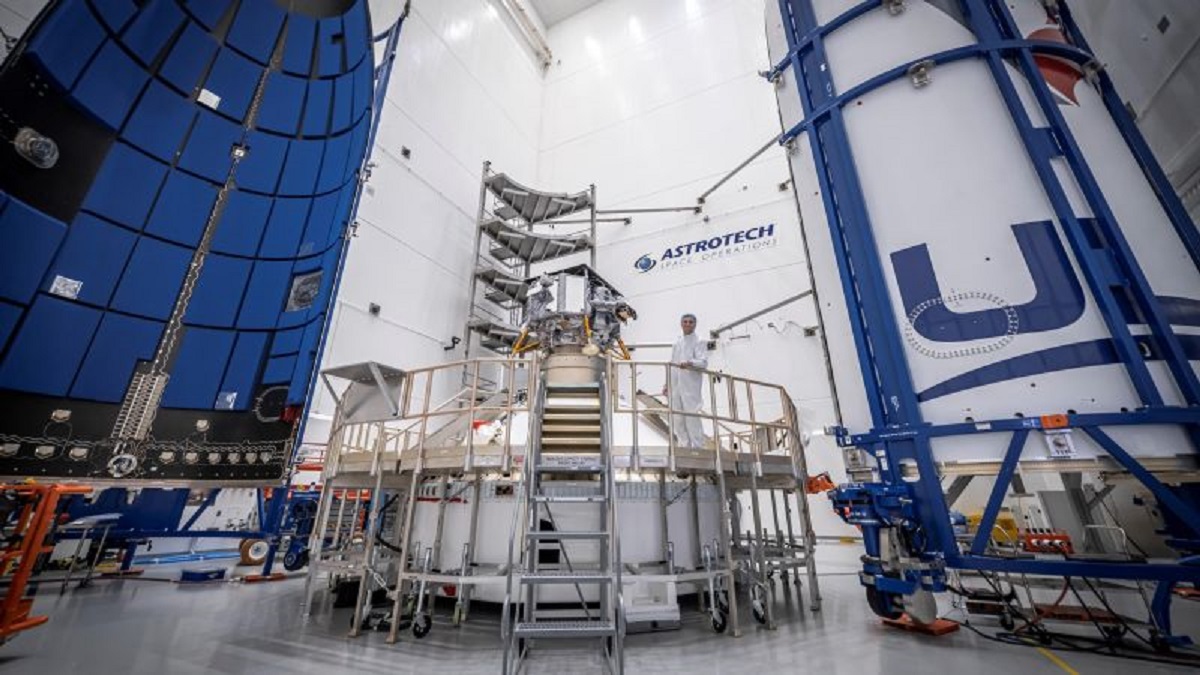The year is already 2021, and the world still finds itself in a situation where 40 percent of the population still does not have stable access to the internet. Based on UN estimates, that accounts for nearly 3.8 billion people worldwide that can’t connect to the internet. This unequal access to the internet has plenty to do with lack of access to the often costly and sophisticated infrastructure required to online. Starlink Internet aims to solve that by providing fast, stable, low-latency internet connections for everyone anywhere.
Starlink Internet is Elon Musk’s latest SpaceX latest project built with the intention to fully connect the world. Let’s explore just what this ambitious and technologically disruptive new project has to offer and why you may want in on it.
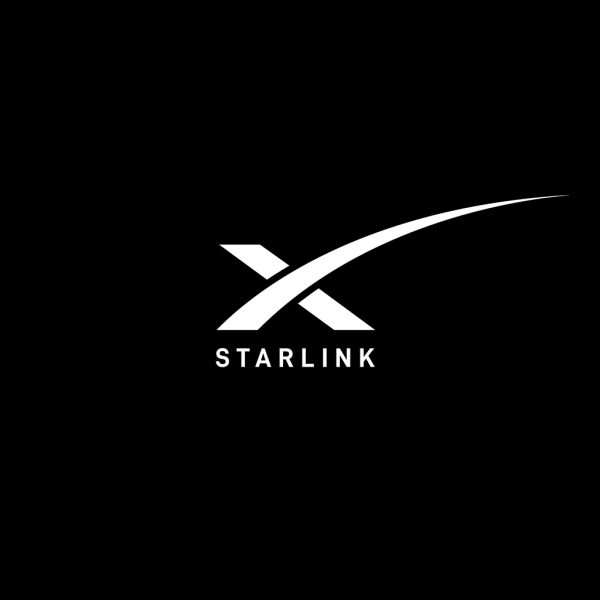

What is Starlink?
Starlink Internet is the latest project to be rolled out by SpaceX, the world’s most popular aerospace company founded by Elon Musk. The project envisions a globe-encircling network of beaming satellites. The network of satellites will offer low-latency and high-speed internet to any location worldwide. The project aims to launch as many satellites into space as needed to transmit high-speed internet signals back to satellite dishes on Earth.
The technology’s unique selling point is in its ability to reach the remotest areas that cannot be reached by traditional cable internet. In a statement made by founder Elon Musk, the company is aiming to reach a modest three to four percent of the hardest-to-reach areas around the world. If successful, reaching this target number can net in revenues of $30 to 50 billion for SpaceX each year. That amount would be enough to fund Starlink, Starship, and Elon Musk’s Mars colonization vision over the next few years. There are also plans to sell the technology for scientific exploration or military purposes.
SpaceX first announced Starlink Internet back in January 2015. Soon after, the company got the go-signal from the Federal Communications Commission (FCC) to operate non-geostationary satellites. Once they got the necessary permits, SpaceX then proceeded with two pilot tests in 2018. Over the next two and a half years, Starlink would carry out 18 missions to get their satellite buses into space. As of February 2021, they have already launched a total of 1,023 Starlink satellites to LEO. The deliveries were carried out by different rocket ships owned by SpaceX, the most popular two being Falcon 9 and Falcon Heavy. The company plans to deploy more satellites in 2021 and 2022 to reach its goal of 12,000 active satellites.
How Does Satellite Internet Work?
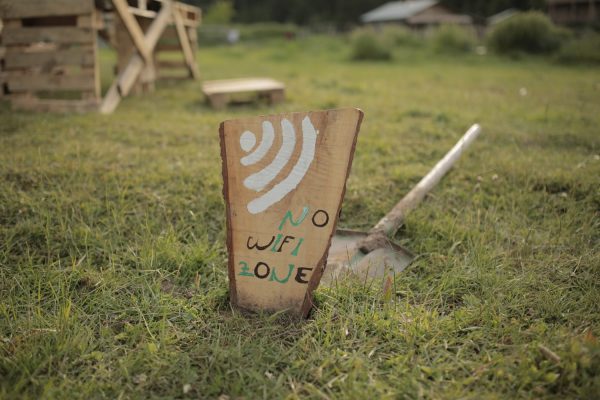

Before we get into the meat of the matter, we first need to explain how satellite internet works. Satellite internet is a type of internet connection that relies on a satellite to transmit internet signals from your local internet service provider (ISP) to your internet-connected device. Although satellite internet might seem like a new idea, it is actually been n existence for a few decades now.
There are a few requirements for a satellite-based connection. This includes a satellite base, an ISP, a satellite dish, your internet router, and any device that can connect to the internet. These devices send and receive internet signals to and from each other in a network to get internet signals to you. The process begins with your ISP sending internet signals to the satellite. The satellite then reroutes the signal to a satellite dish in your home. The satellite dish transfers the signal to your modem to give you an internet connection.
Satellite internet is one of three types of internet connection next to cable internet and DSL. Satellite internet can deliver standard speeds of 100 Mbps. However, it only falls second to cable internet within the spectrum of internet speeds. Another problem that is common to satellite internet has to do with latency. Latency is the length of delay that occurs when transmitting internet signals to and from a satellite, and it’s usually measured in milliseconds (ms). Satellites tend to experience higher rates of latency compared to other services. The problem is not exclusive to satellites, though. All types of internet—including DSL and cable—experience some latency, albeit to a lesser degree.
The Starlink Beta Kit
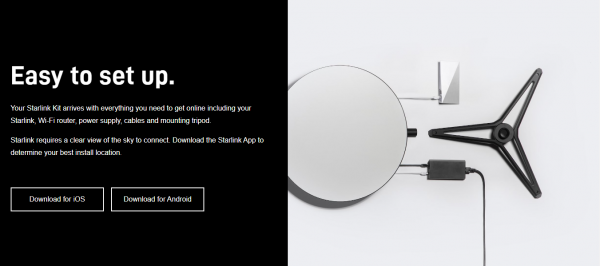

Starlink Internet is currently not yet fully operational, but users are able to get a glimpse through the beta test version. Starlink started to accept preorders from customers late last year. Now, there are more than 10,000 customers have been able to get their hands on the Starlink kit. The kit includes several components like the actual Starlink antenna (shaped like a pizza box), a Wi-Fi router, a power supply, a mounting tripod for the antenna, and connector cables. Users need to connect the rounded antenna to the router via cable. The router, in turn, must be connected to your internet modem. Users can control the setup via the Starlink application via mobile or computer. It’s also advisable to check the speed and latency rate for yourself, and you can refer to this piece explaining in detail how to check internet speeds.
As far as we know, the Starlink setup follows the traditional setup for satellite internet. It on the network of devices to transmit internet signals from the ISP to the device. However, SpaceX made a number of modifications to increase internet speeds and reduce latency as far as they can manage.
Instead of using radio waves to communicate with other satellites, Starlink uses space lasers that can transfer hundreds of gigabytes of data within seconds. Each satellite works in conjunction with others. In essence, the satellites form a network that allows them to bounce off internet signals almost instantaneously. The company has also stated that they are planning to incorporate laser links in future satellites to reduce the need for ground stations.
How Fast Will Starlink Internet Speeds Be?


The beta test for Starlink promises anywhere between 50 to 150 MBps speeds with 200 to 400 ms latency. These rates are expected to improve significantly over time. In a Tweet, Musk told the public to expect the speed rates to climb to 300 MBps with latency rates of less than 20ms within the next year. This is quite enough to match the standard cable internet for watching 4K videos, downloading multiple files, and online gaming. For hardcore gamers out there, you might want to check out this piece if you often wonder what is the ideal internet speed for smooth online gaming.
These rates are expected to improve further as SpaceX approaches their 1,440-mark in terms of satellites in orbit. SpaceX should be able to reach its goal of 12,000 satellites in active deployment by the end of 2021.
If you’re curious as to where these speeds fall within the spectrum, consider the following. Typical DSL internet can provide between 5MBps to 2100MBps. Meanwhile, cable internet can produce anywhere between 20 to 1,000 Mbps. With this in consideration, the speeds of 300Mbps are just at par with normal cable internet. That really isn’t spectacular by cable internet standards, but it’s already an achievement by satellite internet standards. It exceeds the average 100Mbps that most satellite services are able to deliver.
Another crucial point is that this speed isn’t sensitive to geographical restrictions like cable internet is. This means you can be in a remote location and still get a decent internet connection. Before you know it, you can say goodbye to those Wi-Fi boosters.
How Much Will Starlink Internet Cost?


The Starlink kit costs $499. The kit comes with everything, including the antenna, router, cables, and mounting tripod. This excludes additional fees covering shipping fees or taxes. Meanwhile, there’s also the monthly subscription fee which costs $99 per month. Take note, though, that SpaceX requires a deposit of $99 to get in line for the service.
This deposit fee is presumably separate from the very first subscription payment. In total, first-time subscribers should expect to be charged a total of $600 for the kit and initial subscription. This amount may increase further with shipping fees and tax. The pricing for Starlink Internet is a bit steep, but the investment is well worth it for users in extremely remote areas.
When Will Starlink Internet Become Available?


Starlink services have technically been available since early last year, but only for select regions in the United States. The private beta testing phase started in late July 2020 while the public beta test started in October 2020.
According to a filing made by SpaceX with the FCC on February 2021, the beta test was able to get a total of 10,000 customers from select areas in the U.S. where the technology was available. The company is looking to expand coverage to its full capacity in the U.S. by late 2021. They have also started to take pre-orders for the actual service. Check out the Starlink official website to pre-order your own Starlink kit.
How Many More Satellites Does Starlink Need to Deploy?
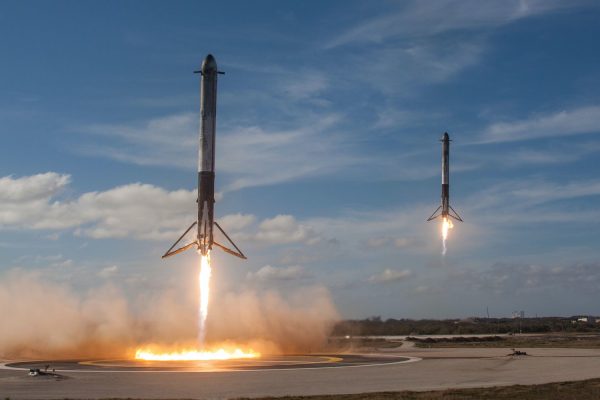

Starlink is aiming to become the most advanced internet service in the world. And they mean serious business when they say they want to reach a global scope. But in order to achieve this worldwide dream of a low-latency internet service, SpaceX would have to launch what they call a constellation of 12,000 satellite buses into space within the next couple of years. All of these would have to co-exist at a low-earth orbit (LEO) at an altitude of 341 miles (550 kilometers).
Starlink has plans to increase this number to 42,000 satellites within the next few decades. But for now, the company is still working on expanding its current 1,000 satellite mark. SpaceX still has plenty of work cut out for them, but they plan to speed up the process by incrementally increasing the number of missions within the next two years.
Many people are shocked by the total volume of satellites that Starlink aims to put out, but there’s actually a practical reason behind it. Satellites deployed in LEO, despite lowering latency, will tend to have limited scope compared to satellites deployed at higher altitudes. Satellites deployed this close to Earth also tend to change their positions relative to the ground rather quickly. This means that in order to achieve a global scope, SpaceX would have to deploy a large number of satellites. We also have to remember that the satellites communicate with each other to send signals back to Earth. The more satellites there are to communicate with each other, the stronger the signals become.
What Are the Existing Problems Faced by Starlink?


Starlink Internet was met with much excitement by consumers. However, other groups such as the astronomical societies have found it as a great cause for concern because satellites appear very bright in the night sky, making them appear like stars. Their bright appearance via telescopes can make it difficult for astronomers to distinguish them from actual stars. That bit of information is not good for astronomical surveillance efforts. These efforts aim to monitor the skies for potentially significant astronomical events, including potentially harmful space objects that might hit Earth.
Another problem would be the internet signals interfering with radiofrequency waves. Astronomers use these signals to study the behavior and status of heavenly bodies. Interference at LEO may prevent them from getting accurate data. Many SpaceX has begun taking steps to address the issue. First, they added visors to reduce the sun’s glare which would reduce overall brightness. They’ve also modified how the satellites move in space. SpaceX hopes that these efforts would somehow lessen the impact of the visual noise the satellites created.
While Starlink may have taken the brunt of the astronomical society’s concerns, the problem goes much deeper than the project. Starlink competitors such as Amazon’s Kuiper, Sonos’ One Gen, and OneWeb all have plans to build their own constellation of satellites over the next few decades. These projects altogether pose a mega-constellation threat to astronomy. As you might imagine, it’s going to lead to a situation where thousands upon thousands of satellites are hovering above the Earth. Besides causing visual noise for astronomers, a mega-constellation of satellites also increases the risk of space collisions and accidents. There’s also the problem of the lack of regulation stating who can out up satellites or how many there can be in orbit.
Final Thoughts on How Starlink Internet Can Change the Future of the Internet


Starlink is one of the most ambitious, expensive, and controversial projects to hit the tech industry this past decade. However, the project is only in the infancy stage. It could take a full decade before SpaceX can really claim global coverage. But if and when SpaceX reaches their goal, it could potentially alter the world as we know it. The switch would remove physical and infrastructure-based barriers to the internet.
As such, it could be life-changing for the 40 percent of the global population who remain disconnected from the digital world. The project promises to be a quantum leap for science and technology. Even more than that, it promises a massive leap for the realization of human freedoms. The bottom line is that Starlink will inevitably change the future of the internet as we know it, and that’s a very good thing.
